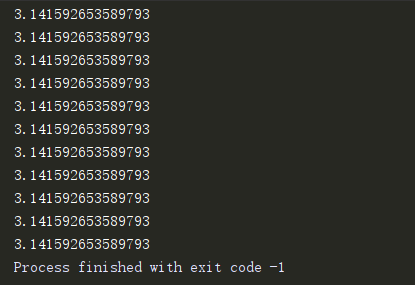分支结构
1、单分支:一般用于只会发生一种情况的场景,if
#90以上优秀
score=95
if score>90:
print("优秀")
2、双分支:一般用于会发生两种情况的场景,if,else
#90以上优秀,89到70良好
score=80
if score>90:
print("优秀")
else:print("良好")
##
score=82
print("优秀")if score>90 else print("良好") ## 结果一 条件 结果二
3、多分支:一般用于会发生多种情况,if,elif,elif, else
#90以上优秀,89到70良好,69到60分及格,60分以下不及格
s=eval(input("请输入一个分数"))
if s>90:
print('优秀')
elif s>70:
print("良好")
elif s>60:
print("合格")
else:print("不及格")
逻辑运算符
#+-*/
and #两者必须都满足
or #两者只要满足一个
not #非
异常处理
x = 10
try:
y = int(input('数字:')) # 10
y += 10 # y = y + 10
except Exception as e:
print(f'error: �33[1;35m {e} �33[0m!') ##设置报错时的颜色
finally: # 无论包不报错,都会执行finally下面的代码
print(1)
print(x + 10)
**********************
x=15
try:
y=int(input("请输入一个数"))
y+=x
except Exception as e:
pass
finally:
print("结果在下方:")
print(y)
循环结构
1、for循环
for i in range(1,3): ##只循环1,2的
print(i,end='') ##1,2
for i in range(1,10,2): ##只循环1,9且步长为2
print(i,end='') ##1,3,5,7,9
2、while循环
factory = 0.01
base =0
while base < pow(1.01,365):
factory += 0.001
base = 1 # 37.78343433288728
for i in range(365):
if i % 7 == 0:
base *= (1 - 0.01)
elif i % 7 == 6:
base *= (1 - 0.01)
else:
base *= (1 + factory)
print(factory)
3、break和contine的使用
- break跳出并结束当前整个循环,执行循环后的语句
- continue结束当次循环,继续执行后续次数循环
- break和continue可以与for和while循环搭配使用
for c in "PYTHON":
if c == 'T':
continue
print(c, end=',') ##P Y H O N
for c in "PYTHON":
if c == 'T':
break
print(c, end=',')##P Y
random模块
import time
time_ = time.time()
print(str(time_).split('.')[-1][-1]) ##随机数的产生
random.seed(10)
print(random.random()) # 取(0,1)之间的小数
# 如果不自定义种子,则种子按照当前的时间来
print(random.random()) # 取(0,1)之间的小数
lt = [1,2,3,4]
random.shuffle(lt)
print(lt) ##数组中的数随机排序
lt = [1,2,3,4]
random.shuffle(lt
print(random.choice([1,2,3,4])) ##在数组中随机选择一个数
案例学习
圆周率的计算
# 蒙特卡洛方法求Π
import random
count = 0
for i in range(100000):
x, y = random.random(), random.random()
dist = pow(x ** 2 + y ** 2, 0.5)
if dist < 1:
count += 1
print(count / 100000 * 4)
##公式计算
pi = 0
k = 0
while True:
pi += (1/(16**k))*
(4/(8*k+1) - 2/(8*k+4) - 1/(8*k+5) - 1/(8*k+6))
print(pi)
k += 1
